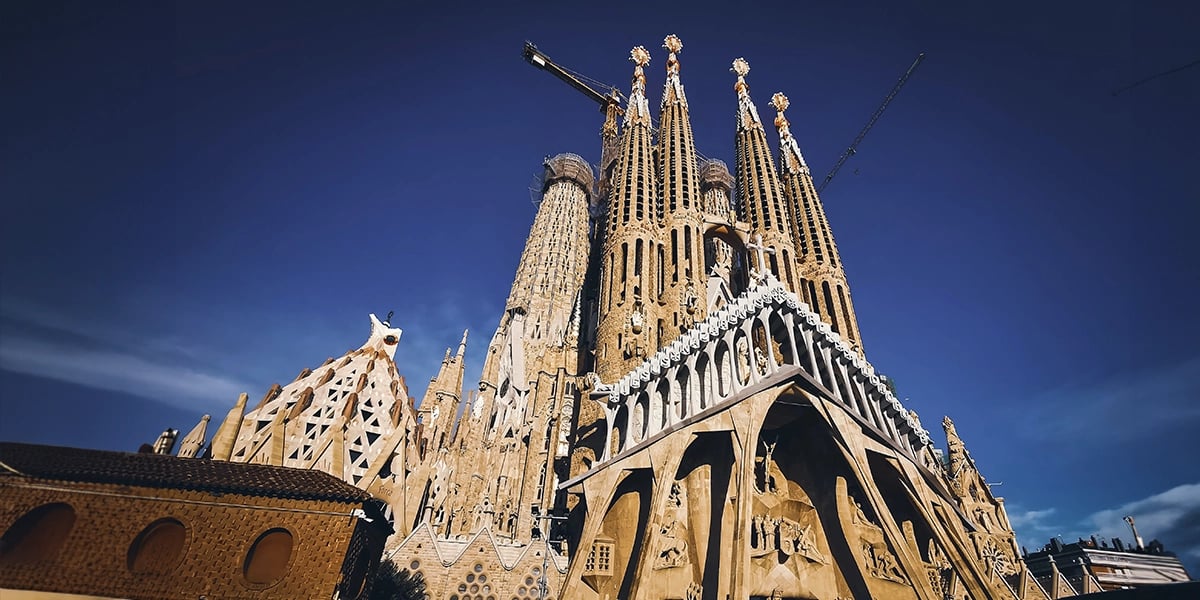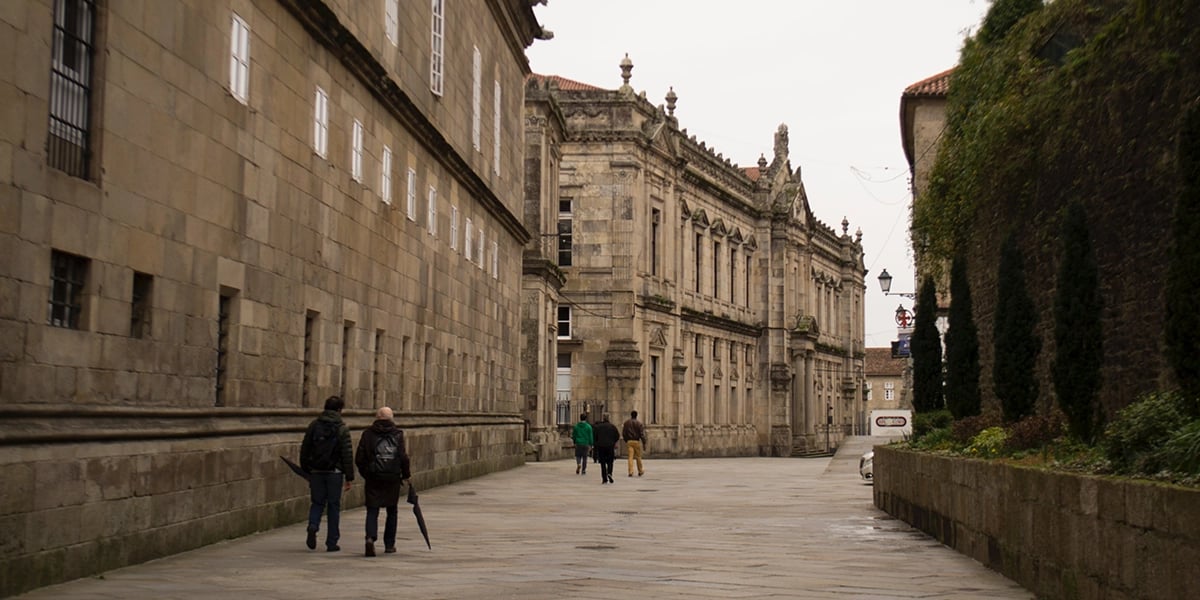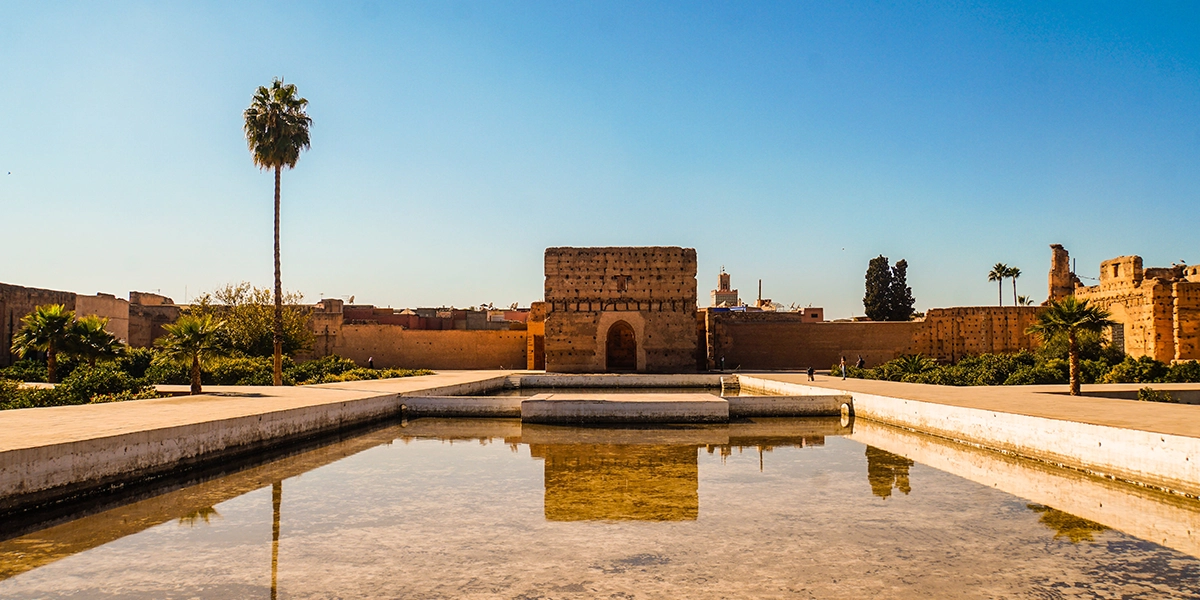Spain, a country rich in history, culture, and diverse landscapes, offers students a unique opportunity to blend education with adventure.
From iconic monuments to historical gems, the following must-visit landmarks offer students an immersive experience that goes beyond textbooks, providing insights into Spain's diverse heritage.
From architectural marvels to ancient pilgrimage routes, the following famous landmarks in Spain are a must-visit for students seeking a deeper understanding of the heritage of this country.

1. La Sagrada Familia, Barcelona
Standing tall and proud against the Barcelona skyline, the Sagrada Familia is more than just a basilica; it is a testament to architectural brilliance, spiritual symbolism, and the enduring spirit of Barcelona. Designed by the visionary architect Antoni Gaudí, this iconic masterpiece has become synonymous with the city itself, drawing millions of visitors each year to marvel at its unique blend of Gothic and Art Nouveau elements.
The Sagrada Familia's origins date back to 1882 when architect Francisco de Paula del Villar conceived the idea. However, Gaudí took over the project a year later, infusing it with his distinctive style. The basilica's construction, although ongoing, has been a labor of love for over a century. Gaudí famously remarked that "my client is not in a hurry," emphasizing the commitment to perfection over haste.
The interior of the Sagrada Familia is a sensory overload of light, color, and symbolism. Gaudí's use of natural light, filtered through vibrant stained glass windows, creates an ethereal atmosphere within the basilica. The forest of columns, designed to mimic trees, reaches skyward, forming a unique architectural spectacle that elicits a sense of reverence.
2. El Camino de Santiago
If you are planning a school trip to Spain, a place that cannot be missed is El Camino de Santiago, or the Way of Saint James. Because is not just a pilgrimage; it's a transformative journey that spans centuries, cultures, and landscapes. This ancient trail, leading to the Santiago de Compostela Cathedral in northwest Spain, has captivated the hearts and minds of pilgrims from around the world.
The origins of El Camino de Santiago trace back to the 9th century when the tomb of Saint James, one of the twelve apostles of Jesus, was believed to be discovered in Santiago de Compostela. As news of the sacred site spread, pilgrims began traversing the trail to pay homage to the apostle and seek spiritual blessings. Over time, El Camino evolved into a network of routes, the most popular being the Camino Francés.
The culmination of El Camino is the Santiago de Compostela Cathedral, where the remains of Saint James are believed to rest. Pilgrims gather in the grand Plaza del Obradoiro, their emotions a mix of exhaustion, elation, and fulfillment. The Botafumeiro, a massive censer, swings from the cathedral's ceiling during special occasions, enveloping the pilgrims in the sweet aroma of incense and symbolizing the purification of their journey.

3. Alhambra, Granada
Nestled against the backdrop of the Sierra Nevada mountains in Granada, Spain, the Alhambra stands as a testament to the rich cultural tapestry that is woven into the Iberian Peninsula. This iconic palace and fortress complex, dating back to the 13th century, represents the pinnacle of Moorish architecture and offers visitors a glimpse into a bygone era of exquisite artistry, intricate design, and historical significance.
The Alhambra's history traces back to the Nasrid Dynasty, the last Muslim dynasty in Spain. Commissioned in the mid-13th century by Muhammad I, the complex served as a royal palace and fortress. The name "Alhambra" itself is derived from the Arabic words "Al Qal'a al-Hamra," meaning the Red Fortress, a nod to the reddish hue of its walls, particularly at sunset.
Throughout its history, the Alhambra has witnessed the ebb and flow of various cultural influences. Following the Reconquista in 1492, when the Catholic Monarchs Ferdinand II of Aragon and Isabella I of Castile reclaimed Granada, the Alhambra underwent modifications to accommodate the Spanish rulers' tastes. The Palacio de Carlos V, a Renaissance-style palace within the complex, stands as a testament to this merging of Islamic and Christian architectural elements.
4. Prado Museum, Madrid
Boasting an unparalleled collection of masterpieces, this cultural gem is a haven for art enthusiasts and history aficionados alike. With works spanning from the 12th to the early 20th century, the Prado Museum is a veritable time capsule that transports visitors through the epochs of European art.
Established in 1819 as the Royal Museum of Painting and Sculpture, the Prado Museum has evolved over the centuries, becoming one of the most prestigious art institutions in the world. Its origins can be traced back to the Spanish monarchs, who sought to create a collection that would rival those of other European courts.
The Prado's collection is a journey through the evolution of artistic styles and movements. Visitors can explore the Gothic period through works like Rogier van der Weyden's "Descent from the Cross" and delve into the Renaissance with masterpieces like Titian's "The Emperor Charles V at Mühlberg." The museum's collection is also renowned for its unparalleled representation of Spanish Baroque art, featuring iconic works by Diego Velázquez and Francisco de Zurbarán.

5. Park Güell, Barcelona
Perched on Carmel Hill overlooking the vibrant city of Barcelona, Park Güell stands as a testament to the artistic genius of Antoni Gaudí. This iconic public park, designated a UNESCO World Heritage Site, invites visitors into a surreal realm where nature and fantasy converge in a captivating display of whimsy and architectural brilliance.
Designed by Gaudí between 1900 and 1914, Park Güell was originally conceived as a residential project commissioned by industrialist Eusebi Güell. While the housing development did not materialize, the park became a canvas for Gaudí's creative expression and his innovative approach to urban planning.
Nestled within Park Güell is the Casa-Museu Gaudí, the former residence of Antoni Gaudí himself. The museum offers insight into Gaudí's life and work, showcasing furniture, objects, and personal belongings that provide a glimpse into the mind of the visionary architect.
Spain's landmarks offer students a diverse and immersive educational experience, combining history, art, architecture, and spirituality. El Camino de Santiago, La Sagrada Familia, Alhambra, Prado Museum, and Park Güell each contribute to a well-rounded exploration of Spain's cultural tapestry. Whether tracing the steps of pilgrims, marveling at architectural wonders, or appreciating artistic masterpieces, students are sure to be enriched by their journey through these must-visit landmarks in Spain.







